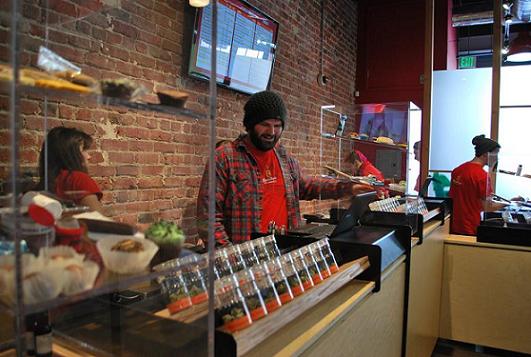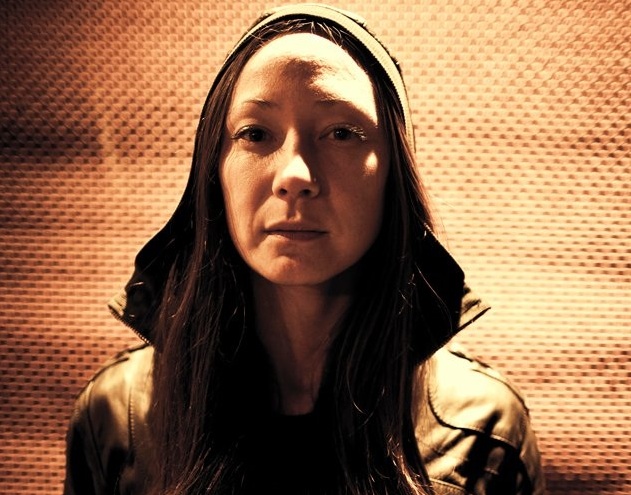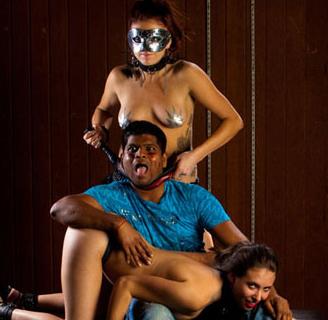>>See this guide on one page and/or print it here
WEDNESDAY 24
Hallow Screen! Walt Disney Museum, 104 Montgomery, SF. (415) 345-6800, www.waltdisney.org. Daily through Oct. 31. 11am, 1pm, 3pm, 5pm, free with museum admission. Freak out (just don’t forget the popcorn) at this all-ages-friendly lineup of animated boo-stories. The Skeleton Dance, Pluto’s Judgment Day, The Mad Doctober, and The Legend of Sleepy Hollow all get their moment in the Disney Museum’s very own screening room.
Haunted Haight Walking Tour www.hauntedhaight.com. Daily through Oct. 31, with some dates through December. 7pm, $20. Let the SF Ghost Society scare the living bejeezus out of you on this guided scramble through Haight-Ashbury’s most spirited sites. The tour’s meant to be all-ages, but guides caution that those under 13 years may want to sit out this scare. You’ll wind up at a haunted pub, so the adult beverage capable, at least, will get a chance to drink away thoughts of the dead among us.
THURSDAY 25
Castro Theatre double-features 439 Castro, SF; www.castrotheatre.com. $8.50-11, also Tue/30. Big-screen terrors with Dracula (1979) and Cat People (1982) on Thu/25 (screenings begin at 2:30pm) and The Cabin in the Woods (2011) and House of 1,000 Corpses (2002) on Tue/30 (screenings begin at 7:30pm).
Masquerade Arc Gallery, 1246 Folsom, SF. (415) 861-3504, www.arc-sf.com. Through Nov.18. Opening reception: noon-5pm, free. Harvest some last-minute costume inspiration from this art exhibition of 40 selected masks, revolving around the theme “the obfuscation of truth.” With works by Michelle Peckham, Michal Wisniowski, Courtney Murphy, and more.
Popscream with Light Asylum, Popscene DJs Rickshaw Stop. 10pm, $13–$15, 18+. A modest Hallo-pun on the youthful weekly Popscene parties, with the creepy, bright-light-in-the-dark music duo Light Asylum.
Provocations 1015 Folsom, SF; www.facebook.com/RAWSanFrancisco. 7pm-midnight, $15 ($5 for after party with Slayers Club DJs). “A little bit of bite. A little bit of lust. And 100 percent deliciously wicked.” Plus aerialists, burlesque, body painting, treats, and tons of art, fashion, and music at monthly party RAW SF’s tribute to desire.
Unmasked: GLBT History Society Gala Green Room, War Memorial, 401 Van Ness, SF; www.unmaskedgala.org 7-9pm, $60–$100. This annual masquerade-themed hoot celebrates the out, proud, and essential historical society with a tribute to local queer filmmakers, yummy food, hosted bar, glamour galore, and dazzling entertainment from hunky baritone Zachary Gordin, Cello Street Quartet, Glamamore, and the soulful Hard French DJs.
Zombie NightLife Cal Academy of Sciences, 55 Music Concourse Drive, SF; www.calacademy.org. 6pm, $10–$12. Zombies return to the museum with Peaches Christ’s Dead Drag Queen Review and costume contest, DJs S4NtA-MU3rTE and Chauncey CC of 120 Minutes, zombie lectures, a zombie cocktail tour, and undead makeovers.
FRIDAY 26
As You Like It Freaky Friday Costume Party Beatbox, 314 11th St., SF; www.ayli-sf.com. 10pm-late, $10–$25. The frightfully good monthly quality techno party plays dress up, with special guests Morgan Geist (his name means ghost!) from NYC, Safeword from SF, Conore, Rich Korach, and MossMoss.
Audiopharmacy’s 4th Annual Halloween Prescription hOMevolution, 1255 26th St., Oakl. (415) 728-7149, www.brownpapertickets.com. 10pm-6am, $40-60. Satisfies your ghoulish desires at this huge party with a fashion show featuring 13 macabre models, live music, photobooth, open bar, and aerial silk performance. And if you manage to survive the night, join what’s left of the affair for a sunrise tea ceremony.
Flashback Fridays Mezzanine, 444 Jessie, SF; www.mezzaninesf.com. 9pm, $30. 1980s-style Halloween party with Wonder Bread 5, and DJs Omar of Popscene, Damon Boyle of 1984, and “video mashups master” Billy Vidal.
Freakers’ Ball Two-Day Halloween Costume Bash Party Public Works, 161 Erie, SF; www.publicsf.com. Also Sat/27, 9pm-5am. $24 single day, $45 two-day pass. This is the 18th annual Freakers Ball, with performances by underground dance music superstars Addison Groove, Benoit and Sergio (they killed it last time they were here), and Eprom on Friday, and Claude Vonstroke, Otto Von Schirach, and Justin Martin on Saturday. Too much!
Halloween! The Ballad of Michele Myers CounterPulse 1310 Mission, SF; michelemyers2012.eventbrite.com. 8pm, $20–$25, Thru Wed/31. What do you get when you cross all your favorite retro teen slasher flicks with TV’s “Thw Facts of Life”? This hilarious, horrifically entertaining musical from twisted drag queen Raya Light and a cast of loony club luminaries.
“In Heaven, Everything is Fine” Public Works, 161 Erie, SF. www.publicsf.com. Through Nov. 7. Opening reception: Fri/26 5-9pm, free. A group exhibition of never-before-seen works inspired by the weird world of TV and movie director David Lynch. Gaze upon a replica of Twin Peaks’ Black Lodge in superlative, becostumed form, and you might just win a prize — the exhibition is hosting its very own costume contest.
Lights Down Low Halloween Monarch, 101 Sixth St., SF; www.monarchsf.com. 9pm-3am, $12. The bonkers regular club night gets all the way low — TO DARKEST HELL. But with great upbeat, trippy UK bass music from L-Vis 1990, SFV Acid, Urulu, and many more.
Murder Ballads Bash Starry Plough, 3101 Shattuck, Berk; www.starryploughpub.com. 9pm, $8–$10. This 11th annual murder ballads bash includes Orange Jews, Flaming Telepaths, Luther Monday and Karry Walker, Val Esway, Happy Clams, and more.
Roller Disco Costume Party Cellspace, 2050 Bryant, SF. www.sfindie.com. 8pm-2am, $10. Rollerskates plus costumes equal a match made in disco heaven, especially with burner-friendly Black Rock Roller Disco at the helm. All proceeds go to nonprofit SF IndieFest, whisch, we should stress, is not liable for any hilarious alcohol-related accidents.
Seance 222 Hyde, SF; www.222hyde.com. 10pm, $7 Excellent local electronic duo Pixel Memory guide you toward ethereal realms on the dancefloor.
Some Thing: There’s a Monster in My Costume! The Stud, 399 Ninth St., SF; wwwthestudsf.com. 9pm-late, $8. Weekly party Some Thing always presents a freakish host of dramatic drag queens getting wild — this time there will be a costume contest!
“To Bury a Cat: Clown Show” Shotwell Studios, 3252-A 19th St, SF; www.facebook.com/clownsonastick, 8pm. Also Sat and through Nov 3. $12-20. Comedy troupe Clowns on a Stick perform a lighthearted (but macabre!) Halloween show.
Total Trash Halloween Bash New Parish, 579 18th St., Oakl.; www.thenewparish.com. 7pm, $12. Total Trash usually throws a messy-spirited party. It’s got three Halloween shows this year, this one is not yet sold out: Nobunny, Shannon and the Clams, Audacity, Uzi Rash, and more.
Trannyshack Halloween: A Party! DNA Lounge, 375 11th St., SF; www.trannyshack.com. 9:30pm-3am, $15. Every year the drag ghouls known as Heklina and Peaches Christ join forces to birth something something so awful, so hideous, so wonderfully faaascinating, you simply have to be there to believe it. With performances by dozens of horrifying queens and electrically eclectic music from DJ MC2.
Von Goat, Dispirit, Atriach, Altar de Fey Elbo Room, 647 Valencia, SF; www.elbo.com. 9pm, $10. A hard rocking, long-hair night billed as “metalween.”
Zombie Prom: Circus of Horrors Verdi Club, 2424 Mariposa, SF; www.verdiclub.net. 8pm, $20. A swinging rock’n’roll dead can dance party with live music by Slim Jenkins, a haunted ballroom, and costume contests.
SATURDAY 27
120 Minutes Elbo Room, 647 Valencia, SF; www.elbo.com. 10pm, $15. The witch house-based goth night nabbed a Salem DJ set and Brooke Candy, along with resident DJs S4NtA_MU3rTE and CHAUNCEY_CC.
Berkeley Community Media Horror Film Festival Berkeley Community Media, 2239 Martin Luther King Jr. Way, Berk; www.betv.org. 7pm. $5-10. Sixth annual fest featuring spooky films by local independent filmmakers.
Boo at the Zoo San Francisco Zoo Sloat and Great Highway, SF. www.sfzoo.org. 10am-4pm, $9-15. The zoo bewitches all comers with its Halloween family day. The animals will be munching holiday-themed treats, and you will too at the candy stations located throughout the park. Make spooky crafts, sing along with a witch at the event stage, and see the new “Masters of the Night” bat exhibit in the elephant building. OoOoOoOo….
Club 1994 Halloween Bash Vessel, 85 Campton, SF; www.club1994.com. 10pm, $18. Halloween, the ’90s TRL way, with a costume contest, DJ battles, Vin Sol and Jeffrey Paradise on decks, a themed photobooth, and more.
Dark Room First Annual Dark Cadavaret Hot Spot, 1414 Market, SF. 9:30pm, $5–$7. One of the city’s best dark and scary electronic dance music monthly parties outdoes itself with a blast of deathly entertainment guaranteed to unravel your goth socks. With outrageous drag performers Phatima, Lady Bear, Dia Dear, VivvyAnne ForeverMORE, Elijah Minnelli, and Vain Hein and a live set by San Cha.
“Divine’s Secrets of the Paranormal” Artists’ Television Access, 992 Valencia, SF; www.othercinema.com. 8:30pm. $7. Genre archivist Christian Divine unspools a night of psychotronic cinema clips, with topics to include UFOs, Bigfoot, the Loch Ness Monster, and ghosts.
Halloween at the Lex Lexington Club, 3464 19th St., SF; www.lexingtonclub.com. 9pm, free. Nobody knows how to celebrate All Hallow’s Eve more than the dykes and queers, honey. Hang out at the Mission’s favorite queer bar for rockin’ DJs Ms. Jackson and China G., special (g)hosts Ajai and Kat, a costume party at midnight, drink specials, and a whole lotta love.
Invasion of the Body Snatchers Pacific Film Archive, 2575 Bancroft, Berk; bampfa.berkeley.edu. 6:30pm. $5.50–$9. The PFA wraps up its “An Army of Phantoms: American Cinema and the Cold War” with the 1956 commies-are-everywhere classic.
Foreverland’s Thriller Halloween Ball Bimbo’s, 1025 Columbus, SF; www.bimbos365club.com. 9pm, $22. Premiere 14-piece Michael Jackson tribute act Foreverland plays MJ’s spooky exponentially platinum record.
Ghost Ship 2012: Apocalypse on Treasure Island Treasure Island, SF; www.ghostshiphalloween.com. 9pm-4am, $50. Every Burning Man fan worth her salt will be out for this annual mega-blast. With DJs from Space Cowboys, Distrikt, Seismic, Janky Barge, and a zillion other camps.
Halloween at Aquarium of the Bay Pier 39, SF; www.aquariumofthebay.org. 9am-8pm, through October 31. Kids in costume get in free through Halloween — and the whole family will enjoy activities like the “freaky fish scavenger hunt,” and underwater pumpkin carving. Adults can indulge in a scary good bad movie, Piranha 3-D, on Halloween night at 6pm. All this, and brainless jellies, too!
Halloween Boooootie DNA Lounge, 375 11th St., SF; www.bootiesf.com. 9pm. $30. A spooky installment of this weekly mashup party night, with A Plus D, Dada, Smash-Up Derby, four rooms of dancing, a midnight costume contest. And probably a boatload of pirates!
Halloween Costume Contest Party at Playland-Not-at-the-Beach 10979 San Pablo, El Cerrito. (510) 592-3002, www.playland-not-at-the-beach.org. 10am-5pm; Sun/28, 10am-5pm, $10-15. Show your scary stuff for prizes at the awesomely fun and wacky-cute amusement park. Check out the creepy Dark Mystery exhibition and the 5000-year-old mummy, too.
Halloween Freakout Monarch, 101 Sixth St., SF; www.monarchsf.com. 10pm-4am, $7–$15. Terroriffic underground house and techno madness from the Honey Sopundsystem and No Way Back crews, for those who like deep tunes as much as daring costumes.
Halloween Massive: Superheros and Villains Westin San Francisco, 50 Third St., SF; So big you won’t get over it — like 20,000 square feet big. Expand your Halloween horizons with DJs J Espinoza, J Trip, Johnny Sin and more playing crowd-friendly tunes for a very big crowd.
Haunted Hill 5-10k West Portal Playground, 131 Lenox, SF. (510) 681-6181, www.tinyurl.com/hauntedhillwestportal. 5-8pm, free. Assemble a team of up to five of the most adventurous people you know, slip on some comfy shoes, and hit the trail of this scavenger hunt in the West Portal neighborhood. It’s like trick-or-treating for adults.
Rin Tin Tiger, Doe Eye, Steelwells, Wes Lesley and His Deadly Medley Bottom of the Hill, 1233 17th St., SF; www.bottomofthehill.com. 9pm, $10. The third annual “Haunted Hoedown” brings a hayride-full of rock goodness.
Safety Meeting Club Six, 66 Sixth St., SF; www.clubsix1.com. 10pm-4am, $10. before you go trick or treating, you need a safety meeting — a dangerous local techno safety meeting, that is, with DJs Robot Hustle, Doc Sleep, Taco Tuesday, Justime, Cindy99, and a live performance from Exillon and Dabecy.
Spiral Dance Kezar Stadium, 755 Stanyan, SF; www.reclaimingspiraldance.org. Doors 6pm, dance 7:30, $20-100. The Reclaiming Collective holds Spiral Dances all year round, but the Halloween dance is their biggest hit. But the dance isn’t for Halloween — as the collective explains, “The holiday popularly known as Halloween is the time of year known to witches as Samhain, when the veil is thin between the worlds of the living and the dead.” Celebrate the Beloved Dead and get lost in the dance with hundreds of others in Kezar Stadium.
Trap City: Hell’s Eve Edition Icon, 1192 Folsom, SF; www.facebook.com/trapcitysf. 9pm, $10. The purple swag and gold chainz hip-hop party gets fiendish with Heroes X Villains, Hi Topz, Bogl, Ultraviolet, Napsty, Facemelter, more.
True Blood Halloween Herbst Pavilion, Fort Mason Center, SF; truebloodhalloween-solyluna.eventbrite.com. 9pm, $30–$80. Massive Halloween club night in the 30,000 square foot space, with EC Twins, Dorman Doray, and Sex Panther, along with vampires, werewolves, zombies, and probably lots of sexy nurses.
The Uptown’s Halloween Bash 2012 Uptown, 1928 Telegraph Ave, Oakl; www.uptownnightclub.com. 9pm, $12–$15. Titillating terrors are promised at this burlesque of happy horrors, with the gorgeous Hubba Hubba Revue in full undressed effect, music by the Deadlies, and much more surf-goth fun.
SUNDAY 28
The Cabinet of Dr. Caligari and Nosferatu Tannery, 708 Gilman, Berk; berkeleyundergroundfilms.blogspot.com. 7:30pm, donations accepted. The two biggest silent horror films (from 1921 and 1922, respectively) in a double-feature that’ll haunt your nightmares.
Haunted Honey Holy Cow, 1535 Folsom, SF; www.honeysoundsystem.com. 9pm, $5. The naughty queer underground house boys of Honey Soundsystem throw one of the best weekly parties in SF. And tonight they’ll do it in costume. You can do it in costume, too!
Spooktacular Halloween Party & Trick or Treat in Japantown Japantown Peace Plaza, Post and Buchanan, SF. (415) 567-4573, www.sfjapantown.org. Noon-4pm, free, all ages. Halloween, Japanese-style, with unique arts and crafts, a bounce house, and trick or treating at the East and West malls.
Sunset Halloween Costume Boat Party Pier 3, SF; www.tinyurl.com/sunsetcostume. 5-11pm, $20. Tech-house superstars Lee Curtis, Thugfucker, and Pillowtalk headline this wild annual blast on the bay from the gore-ious Sunset rave crew.
Supernatural Beatbox, 214 11th St., SF; www.beatboxsf.com. 10pm-4am, $5–$10. Late night Sunday dancing at an otherworldly techno costume party, with DJs Jason Kendig, P-Play, Brian Bejarano, Jeniluv, Mozaic, more.
TUESDAY 30
Bob Saggeth Amnesia, 853 Valencia, SF; www.amnesiathebar.com. Also Wed/31, 10pm, $7–$10. The world’s best female-led, San Francisco-based Black Sabbath cover band plays this two-day Halloween bash.
The Cabinet of Dr. Caligari Davies Symphony Hall, 201 Van Ness, SF; www.sfsymphony.org. Tue/30, 7pm. $20-50. Organist Cameron Carpenter provides live, improvised accompaniment to a screening of Robert Wiene’s 1920 silent chiller, plus 1912 stop-motion short “Camera Man’s Revenge.”
Halloween Balboa Theatre, 3630 Balboa, SF; www.cinemasf.com. Also Oct 31, 10pm. $7.50-10. John Carpenter’s groundbreaking 1978 slasher is presented in a new HD transfer, accompanied by a new documentary: You Can’t Kill the Boogeyman: 35 Years of Halloween.
WEDNESDAY 31
Astrozombies Hemlock Tavern, 1131 Polk Street, SF; www.hemlocktavern.com. 8:30pm, $7. Astrozombies will pay tribute to everyone’s favorite Halloween cover act, the Misfits, hopefully in devil-locks.
Blasthaus Halloween Mezzanine, 444 jessie, SF; www.blasthaus.com. 9pm, $12–$15. The party promotions powerhouse packs a punch with this party: Headliners Etienne de Crécy and Sinden blast French house and UK Bass — you’ll be bouncing off the walls.
Booty Call Halloween QBar, 456 Castro, SF; www.bootycallwednesdays.com. 9pm, $5. Who knows if the Castro will be crazy this year, but it’ll be nuts up in this too-cute weekly queer party. $100-prize costume contest, electro-pop DJ Guy Ruben, photos in the back room, lots of sexy.
Glitter Wizard, Twin Steps, Meat Market, the Parmesans, and DJ Dahmer Thee Parkside, 1600 17th St., SF; www.theeparkside.com. 8pm, $8. The local bands will be portraying the Seeds, the Cramps, G.G. and the Jabbers, and the Kinks, respectively.
Green Gorilla Halloween Anniversary Bash Monarch, 101 Sixth St., SF; www.monarchsf.com. 9pm-3am, $5–$15. The venerable (and slightly insane — in a good way) party crew celebrates 16 years of local madness with DJs M3, Anthony Mansfield, Sharon Buck, Kimmy LeFunk, and very special guest Woolfy, who is woofy.
Housepitality Halloween Icon, 1192 Folsom, SF; www.housepitalitysf.com 6pm-2am, $5–$10. Wonderful family-style house music weekly party brings in classic Detroit techno DJ Dan Bell for a full night of sweaty insanity.
Icee Hot Halloween Elbo Room, 647 Valencia, SF; www.facebook.com/iceehot. 10pm, $10. Awesomely eclectic bass party brings in hard-driving househead Jackmaster for a night of fright and funky grooves.
Mad Hatter’s Ball 1015 Folsom, SF; madhattersball-2012.eventbrite.com. 10pm, $20–$25. With trap-style Chicago DJ duo Flosstradamus, experimental Hamburg native Pantha Du Prince, local acid crunker AN-TEN-NAE, Anna Sia and more.
Nobunny, Shannon and the Clams, POW!, Eeries, DJ Al Love Brick and Mortar Music Hall, 1710 Mission, SF; www.brickandmortarmusic.com. 9pm, $7–$10. Nobunny is always in costume anyway. Rock with him, and the beloved Clams (with Shannon of course), garage-style.
Planet Booty, Double Duchess Cafe Du Nord, 2170 Market, SF; www.cafedunord.com. 9pm, $15. It’ll be a Halloween dance party with sci-fi space-funk meeting queer electro-hop on the floor.
Stay Gold Halloween Public Works, 161 Erie, SF; www.facebook.com/staygoldsf 10pm, $3–$5 Queer hip-hop and style never felt so absolutely, unnervingly amazing — especially when it’s dressed to kill. With DJs Pink Lightning and Rapid Fire.



















